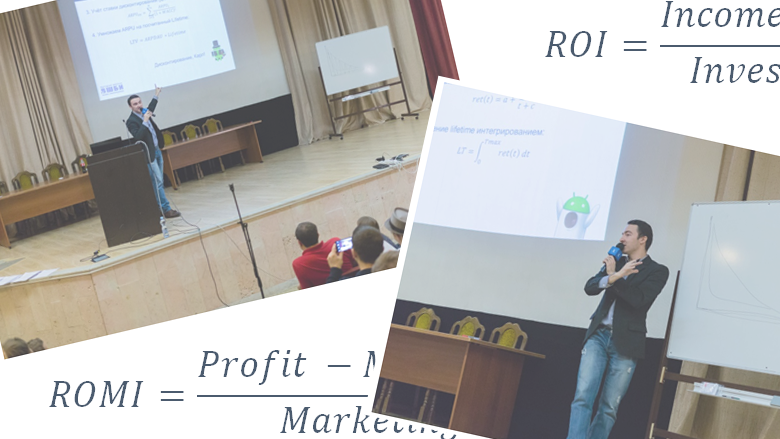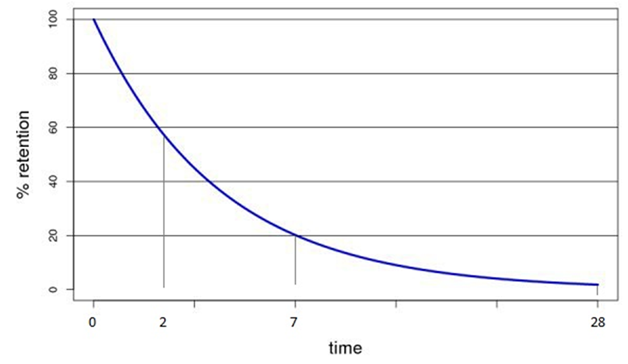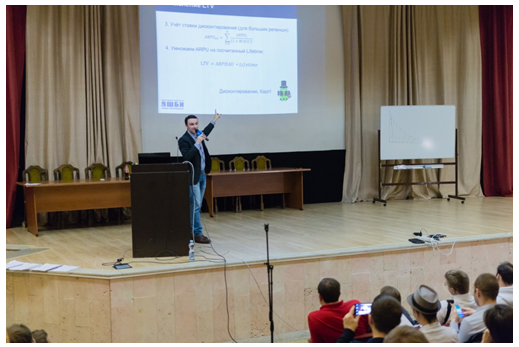At an open lecture from the HSE Graduate School of Business Informatics “How to create your own game” held in March, Konstantin Sakhnov, scientific director of the educational program “Management of Internet Gaming Projects” and director of the Rocket Jump game design department, spoke about approaches to calculating the payback of gaming projects and gave specific calculation methods.

How to check the payback
There are different strategies for making a profit from gaming products. Someone earns money from advertising, someone sells copies or subscriptions. You can drive traffic through cross-promo or rely on the viralka. However, for F2P games, the simplest payback condition can be written as follows:

Here LTV (Lifetime Value) is the amount of money that one user brings on average for the entire time of using the game. And CPI (Cost Per Install) is the cost of attracting one player. And if we learn CPI from those who place our ads, and we can work on reducing it, in particular, optimize advertising channels, then LTV depends primarily on our product.
LTV calculation methods
1. Through audience volume and revenue

If the game is already running, it is known how much it earned for a certain period, for example, for a month. It is also known how many players entered the project during the same period. Dividing the revenue for the period by the number of players who entered the game during this period gives us the indicator we need.
This simplest estimate has two drawbacks at once. Firstly, it works only for already launched projects, without implying the possibility of forecasting. Secondly, in practice we always face difficulties in determining the period for which data should be taken.
2. Via Averaged Lifetime (LT)

ARPDAU – how much money one player brings on average in one day. In fact, this is ARPU divided by 30.
Lifetime (days) – how many days the user “lives” in the game.

Predicting the payback, we looked at the ARPU of other projects of our genre, and, albeit approximately, but assumed the ARPU of our game. Next, we calculate Lifetime. It can be calculated by knowing the retention function of your project. There are a number of well-known methodologies for calculating retention:
- Classic retention – what percentage of people who entered the game for the first time 7 days ago returned on the settlement day.
- Rolling retention – those who returned on the settlement day and later.
- Return retention – those who returned at least once from the 1st to the settlement day.
- Full retention – which were returned every day up to and including the settlement.
- Bracket-dependent return retention – returned at certain intervals.
However, at the forecasting stage, we do not have statistics yet, and therefore we can only assume what the retention of our game will be, or calculate its minimum value necessary for the payback of the project.
The retention of each next day cannot be greater than the previous one. The graph of this function looks like this:

Having 3 reference points, for example, retention 1, 7 and 28 days, we can approximate this function with a hyperbola:

Here, instead of t, we substitute the number of the day (1, 7, 28 or another), and instead of ret(t), the retention value of the project on this day. You can find it out by comparing your game with projects of a similar genre (except Top Grossing).
Next, we write down a system of three such equations, substituting into it the corresponding values t and ret(t). Solving a system of three simple equations with three unknowns, we find the coefficients a, b and c.
Now we have an approximated formula for the retention function. The area under this curve is the Lifetime value we are looking for. Turning to the school integration course, let us recall that the area under the curve is calculated as a definite integral:

We substitute the obtained coefficients and integrate them. After the calculations, we get:

In substitution from 0 to T max (28 days). And here it must be said that the result obtained has at least two inaccuracies:
- Approximation error
- Incomplete interval
If the first point is clear, then you need to comment on the second one. We counted the integral from 0 to 28 days. This assumes that all players spend no more than 28 days in the game. But this is not the case. There is always a core community with a high retention rate that has been playing for several months, and the retention does not converge to 0 on the 30th day. To take this nuance into account, we will add a second month to the curve, assuming that at least half of those who reached the 28th day will remain on the 60th day. This correction will allow you to get a more accurate Lifetime value.

We calculated Lifetime and now substitute it into the original LTV calculation formula and get the desired value:

In some cases, when the retention of the project is large enough, it is necessary to take into account that the money invested in the project today will have a different value tomorrow. To do this, the discount rate WACC (Weighted Average Cost of Capital or Weighted Average Cost of Capital) is taken into account.
Return on investment
Now let’s talk about the return on investment. It is usually characterized by a value called ROI (Return of Investment, sometimes Rate of Return). ROI shows the level of profitability or unprofitability of a business, taking into account the investments made, and in a simple version is calculated as follows:

Sometimes it is advisable to talk about the return of marketing investments ROMI (Return of Marketing Investment). This is due to the fact that in many projects the main share of expenses falls on marketing.

If you want to learn more about the methods of calculating the payback of games, as well as about their creation in general, including analysis of market volumes, the structure of the development team, analysis of key stages of project development and much more, then watch two parts of the open lecture on video: part 1, part 2.
By the way, we have a “homework assignment” for you based on the results of reading this article and watching the lecture videos:
Calculate the payback of a project that has:
- Monthly retention = 20%
- Average revenue from paying per month ARPPU = 800 rubles.
- Percentage of paying PPU = 10%
- The cost of 1 active player CPI = 50 rubles.
Write an answer with a description of the calculation in the comments!
